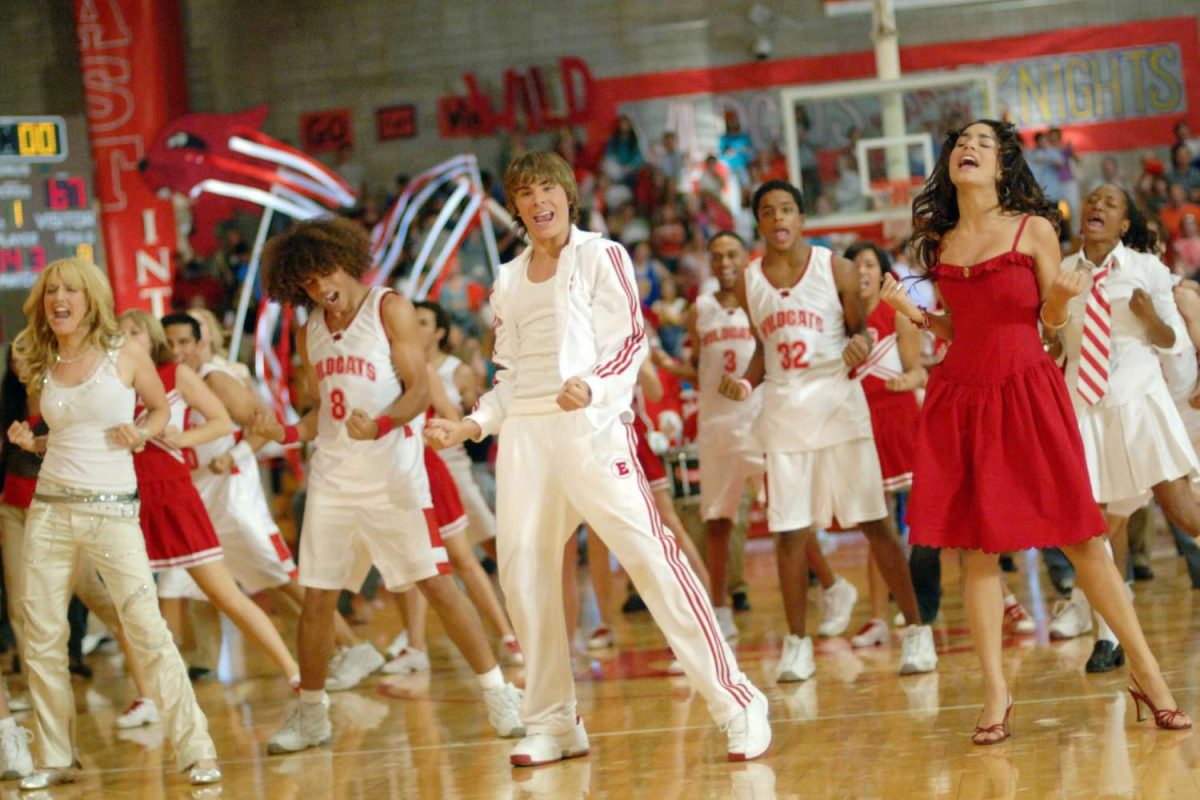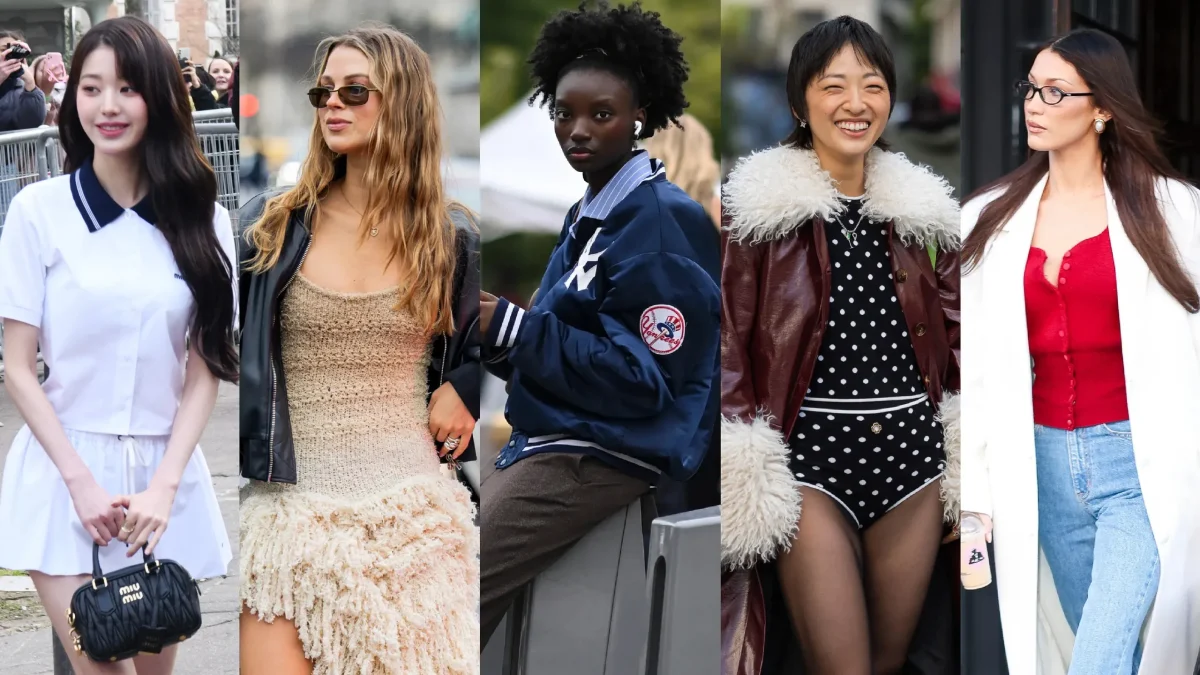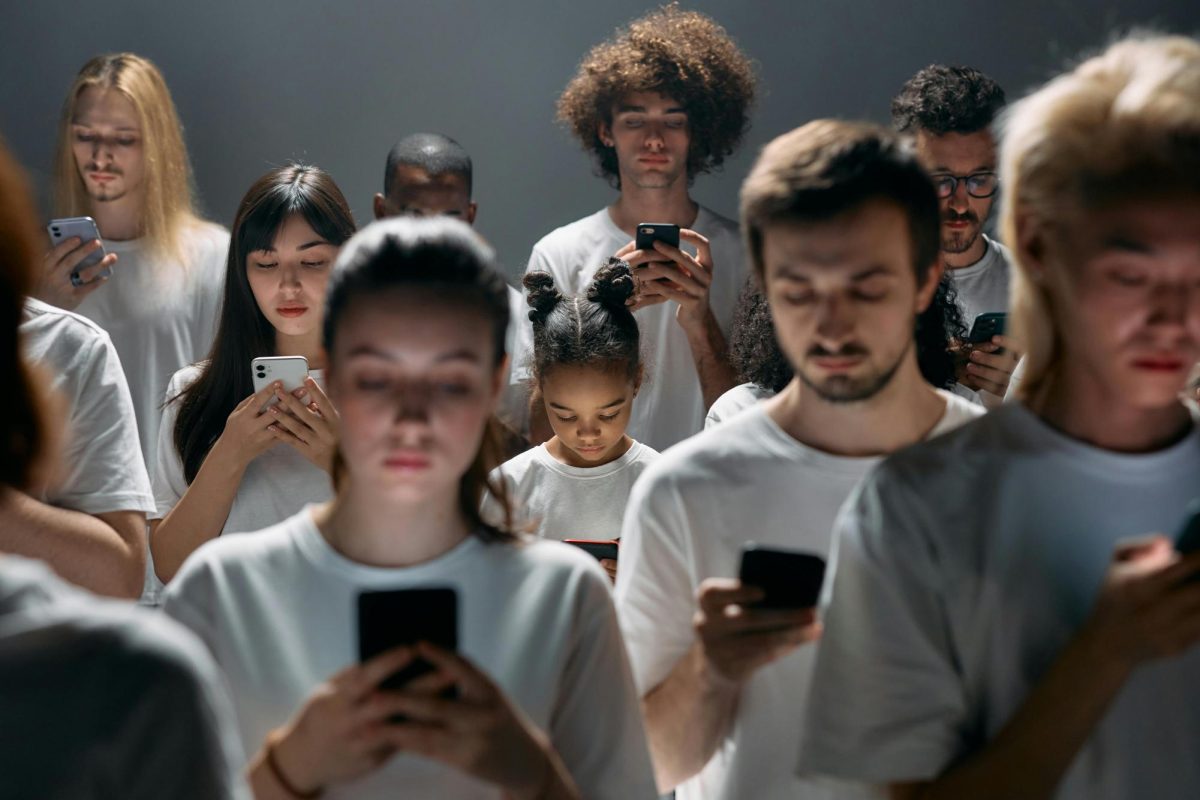From walking into the high school for your first time, to throwing your graduation cap into the air, high school reality comes with many expectations and surprises. This includes cliques, academics, social life, school lunch, and Friday night football lights. Movies about high school address these ideas in many different ways, and people often expect high school to be just like the movies.
One of the first main comparisons of high school media and real-life high school is the sports games. Student sections are always tightly packed with everyone wearing school spirit wear, jumping up and down, cheering for their school team, hoping they will lead their team to victory. But in reality, the student section may be half empty, with half of the students in the stands not dressed for the theme. Freshman Milania Pucci said, “The student sections are not always packed, and people aren’t always in spirit wear.” The sports team will rarely have a dramatic victory and instead may lose or win in anticlimactic fashion! In general, high school media always ends with the most popular kid on the team scoring the winning point in the last few seconds of the game.
In a popular early 2000s movie based on high school life, High School Musical, they follow typical high school stereotypes and aspects. A common theme of many movies set in high school rarely ever shows the students actually being in school. You have multiple minutes to stand outside your decorated locker gossiping about things with your friends, and the school environment seems relaxed and easy to maneuver.
Junior Maddie Kramer said, “I thought I wouldn’t have time to do anything because I would have had so much work”. This is something high school media never covers because it only ever shows social events outside of school. You look forward to classes with your friends, but after comparing your schedule, you realize that you only have one class period, and are barely able to squeeze in a conversation with each other.
High school is a big opportunity to interact with and get to know many new people, but it is often overlooked how much time you will actually spend with one another: you spend a lot of time in your classes, doing work. Once the bell rings for lunch, everyone will walk into the cafeteria and go sit with their groups that are all divided by sports, cheer, popularity, nerds, or skater boys. But in real life, people will go home, drive somewhere in their cars, or walk off campus to go buy themselves lunch.
Another common scene in multiple high school movies is the typical popular kids flipping the lunch tray onto the new kid to scare them, or send the message that they “rule the school”. I have found from just walking in the halls that clicks and groups with obvious patterns are not realistic. Most people won’t wear varsity football jackets to school every day, and friend groups aren’t wearing distinct outfits for people to pick apart which group they may be in. But clothing and fashion trends are easily brought around the school through close friends, or even someone asking you where you got your top.
Senior Marley Kobernick said, “I think things like clothing trends have an influence on other people”. Cliques have everyone in a group following a leader, or doing something to be viewed more highly by the leader, instead of true friendships. This has been something I have found to be completely false in many circumstances.
Freshman Milania Pucci said, “Everyone has their own friends and no one talks about why you are friends with them.” High school is a big opportunity for students to start expressing themselves, and one way of doing that is the people you surround yourself with. There isn’t a group that rules the school and decides how others may feel about a person or a certain group of people. I have found that cliques do not divide the students into distinct categories like the cool kids, nerds, floaters, the fine arts kids, etc.
Though high school students can all have different experiences and opinions on how their experiences went, I have found that high school media is very over-dramatized and is not all that it is lived up to be. Though students’ expectations of high school may not have been developed from high school media, they can definitely play a role in what people think high school is when they are in elementary school, or do not live in the U.S.







